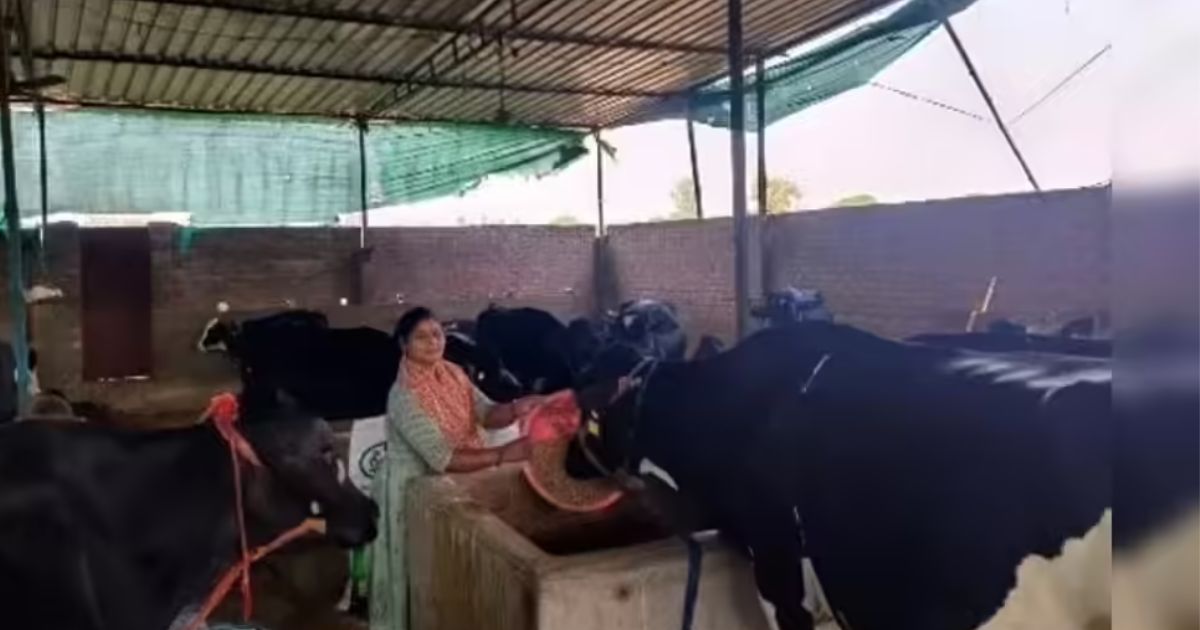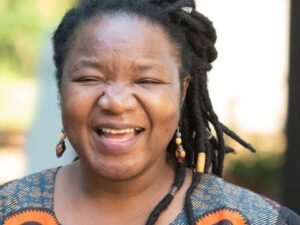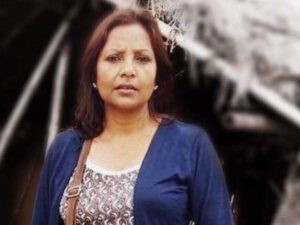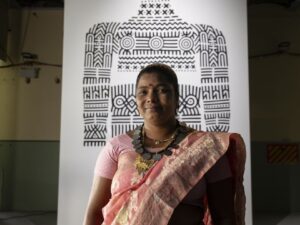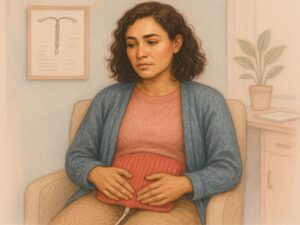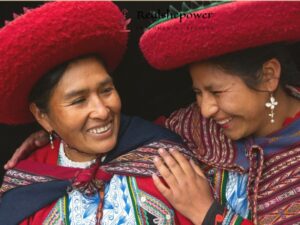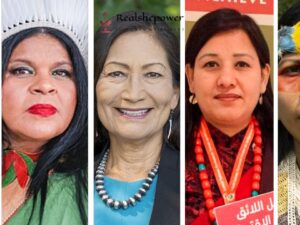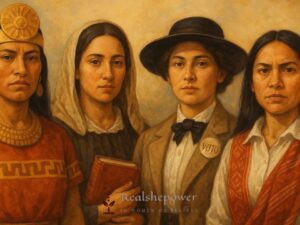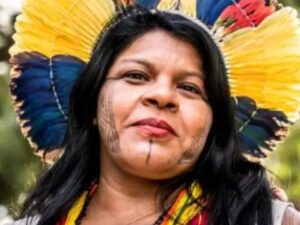Hey there, have you ever wondered what it takes for a woman in a remote Indian village to go from scraping by day-to-day to earning over a lakh rupees a year, all while running her own business and inspiring her entire community? That’s the story of Vinita from Prasiddhi village in Sonbhadra district, Uttar Pradesh—a classic example of what the Lakhpati Didi initiative is all about. I’m going to take you through her life, step by step, in a way that feels like we’re chatting over chai. We’ll dive into the challenges she faced, how government schemes turned things around, and why her success isn’t just about money, but about reclaiming dignity and dreams. Buckle up; this is a tale of grit, goats, and growth that’s as real as it gets.
The Early Days: A Life of Struggle in the Shadows of Sonbhadra
Picture this: Sonbhadra, a rugged district in eastern Uttar Pradesh, known more for its dense forests, tribal communities, and coal mines than for prosperity. It’s one of those places where opportunities are as scarce as rain in the summer. Vinita, a simple rural woman from a joint family, grew up in this environment. Like so many women in rural India, her days revolved around household chores, tending to the fields, and worrying about the next meal. Her family relied on small-scale farming and whatever odd jobs came their way, but it was barely enough to keep the wolf from the door.
Back in the early 2020s, before the big changes hit, Vinita’s income was a pittance—maybe a few thousand rupees a month if they were lucky from selling vegetables or grains. Debt was a constant companion; loans from local moneylenders at exorbitant rates ate into whatever little they earned. Education for the kids? A distant dream. Healthcare? Forget it. Vinita often shared in interviews how she felt trapped, like her life was just surviving, not living. “We used to think about how to manage the household with what little we had,” she once said, echoing the sentiments of millions of rural women across India. In a country where over 70% of the population lives in villages, stories like Vinita’s were the norm, not the exception. Women bore the brunt—handling unpaid labor at home while men migrated for work, leaving families fragmented.
But here’s where things get interesting. Vinita wasn’t one to just accept fate. She had heard whispers about Self-Help Groups (SHGs)—those community collectives where women pool their savings, share knowledge, and support each other. These aren’t new; they’ve been around since the 1990s under programs like the National Rural Livelihoods Mission (NRLM). But for Vinita, joining one in her village was a game-changer. It was around 2023, when the Lakhpati Didi scheme kicked off, that her path really started to shift.
Enter the Lakhpati Didi Scheme: A Lifeline for Rural Women Like Vinita
Let’s pause for a quick backstory on what Lakhpati Didi even is, because understanding this makes Vinita’s story hit harder. Launched in 2023 by the Ministry of Rural Development under the Deendayal Antyodaya Yojana-NRLM, the scheme aims to empower women in SHGs to earn at least ₹1 lakh annually—hence “Lakhpati Didi,” or “sister who owns a lakh.” It’s not just about handing out money; it’s a holistic push towards financial literacy, skill-building, access to loans, and market linkages. The government set an initial target of 2 crore beneficiaries, but seeing the momentum, they bumped it up to 3 crore in the 2024 budget. As of mid-2025, over 1.48 crore women have crossed that threshold, with Uttar Pradesh being a hotspot—boasting thousands like Vinita.
The beauty of it? It’s grassroots-driven. SHGs provide revolving funds (small interest-free loans within the group), and then bigger bank linkages kick in—collateral-free loans up to ₹5 lakh or more through partnerships with banks like SBI. Training comes via Community Resource Persons (CRPs), who teach everything from animal husbandry to digital banking. And for dairy-focused women like Vinita, tie-ups with entities like the Kashi Milk Producer Company (under NRLM) ensure fair prices and timely payments. It’s all about sustainable livelihoods: agriculture, livestock, small enterprises. No wonder events like the Lakhpati Didi Sammelan in places like Navsari, Gujarat, or Jalgaon, Maharashtra, have become celebrations of these transformations, where PM Modi himself has handed out certificates and funds—₹450 crore to 2.5 lakh women in one go back in March 2025.
For Vinita, this wasn’t abstract policy; it was practical help. She joined an SHG affiliated with the State Rural Livelihood Mission, got initial training on dairy farming, and secured her first loan to buy a couple of cows. “The mission didn’t just give me income—they gave me a new way of seeing life,” she later reflected. Starting small, she focused on milch animals, learning modern techniques like fodder management and veterinary care. The Kashi Milk Producer Company bought her milk at good rates, and the digital payments meant no haggling with middlemen. Within a year, her herd grew, and so did her confidence.
The Turning Point: Building a Dairy Empire from Scratch
Fast-forward to 2025, and Vinita’s operation is booming. From those initial two cows, she now owns over 40! Her family pitches in—husband, kids, even extended relatives—but she’s the boss. They produce milk daily, which she sells to the producer company, earning a steady ₹1 lakh-plus annually. That’s not just numbers; it’s life-changing. No more debt traps; instead, savings in the bank, school fees paid on time, and even a bit of expansion into value-added products like curd or ghee for local markets.
What makes her story stand out is the speed of it all—just two years from struggle to success. In April 2025, she was named one of the first five ‘Lakhpati Didis’ by the Kashi Milk Producer Company, a moment that put her village on the map. Media outlets like the Times of India covered it, highlighting how her monthly turnover from dairy hit ₹10,000-15,000 consistently over four seasons, meeting the scheme’s sustainability criteria. But Vinita’s quick to credit the ecosystem: “Kashi Milk gave me confidence through timely payments and support,” she said. The SHG provided the seed money, NRLM the skills, and the scheme the recognition. It’s a ripple effect—her success has inspired over 5,000 women in Sonbhadra alone to join similar ventures, with 5,209 becoming Lakhpati Didis district-wide.
Of course, it’s not all smooth sailing. Rural India throws curveballs: erratic monsoons, animal health issues, or even gender biases at home. Vinita faced skepticism from her in-laws at first—”Why should a woman handle business?”—but her earnings silenced the doubters. The scheme addresses these through women-led governance in SHGs, ensuring decisions stay empowering. And nationally, partnerships with NABARD, ICAR, and even private players like NDDB Dairy Services provide tech support, from weather forecasts to advanced breeding techniques.
Beyond the Bank Balance: Vinita’s Impact on Family, Community, and Beyond
Now, let’s talk real impact, because money is just the start. For Vinita’s family, it’s stability. Her kids are in better schools, and she’s saved enough for emergencies—no more selling assets in tough times. On a personal level, she’s transformed: from a shy homemaker to a community leader. She mentors other SHG women, teaching them dairy basics and encouraging loan applications. “Earlier, we stayed at home and only did household chores,” similar beneficiaries have shared in national reports. Vinita’s story aligns with that—now, she’s the one suggesting ideas, like starting a clothing shop or ration outlet, as seen in other success tales from Odisha or Andhra Pradesh.
Zoom out, and Vinita represents a bigger wave. In Uttar Pradesh, schemes like this have created over 11 lakh Lakhpati Didis, contributing to the state’s rural economy. Nationally, it’s fueling India’s growth—rural women driving the third-largest economy tag, as PM Modi often says. Events like International Women’s Day 2025 in Gujarat spotlighted stories like hers, with revolving funds of ₹2,500 crore benefiting 48 lakh SHG members. And it’s not just dairy; women are into tailoring (like Rihana Begum in Odisha, who bought a sewing machine), farming clusters, or even drone operations under NaMo Drone Didi.
Challenges remain, sure. Documentation hurdles for low-literacy women, limited bank access in remote areas, or climate risks—but the scheme’s evolving, with digital tools like the Lakhpati Plan app for tracking progress. Vinita’s advice? “Start small, stay consistent, and lean on your SHG sisters.” Her journey shows how collective action beats isolation every time.
Wrapping Up: Why Vinita’s Story Matters for All of Us
So, there you have it—the full scoop on Vinita, a normal rural woman who’s anything but ordinary now. From the dusty lanes of Prasiddhi to being a beacon of empowerment, her life proves that with the right support, any “didi” can become lakhpati. It’s not just her win; it’s a blueprint for millions. As India pushes towards Viksit Bharat by 2047, stories like Vinita’s remind us that real progress starts at the grassroots, one empowered woman at a time.
If you’re inspired, check out the official Lakhpati Didi portal or join an SHG if you’re eligible— who knows, the next success story could be yours? What’s your take? Have you met a Lakhpati Didi or seen similar changes? Drop a comment; I’d love to hear. Until next time, keep believing in the power of perseverance.
